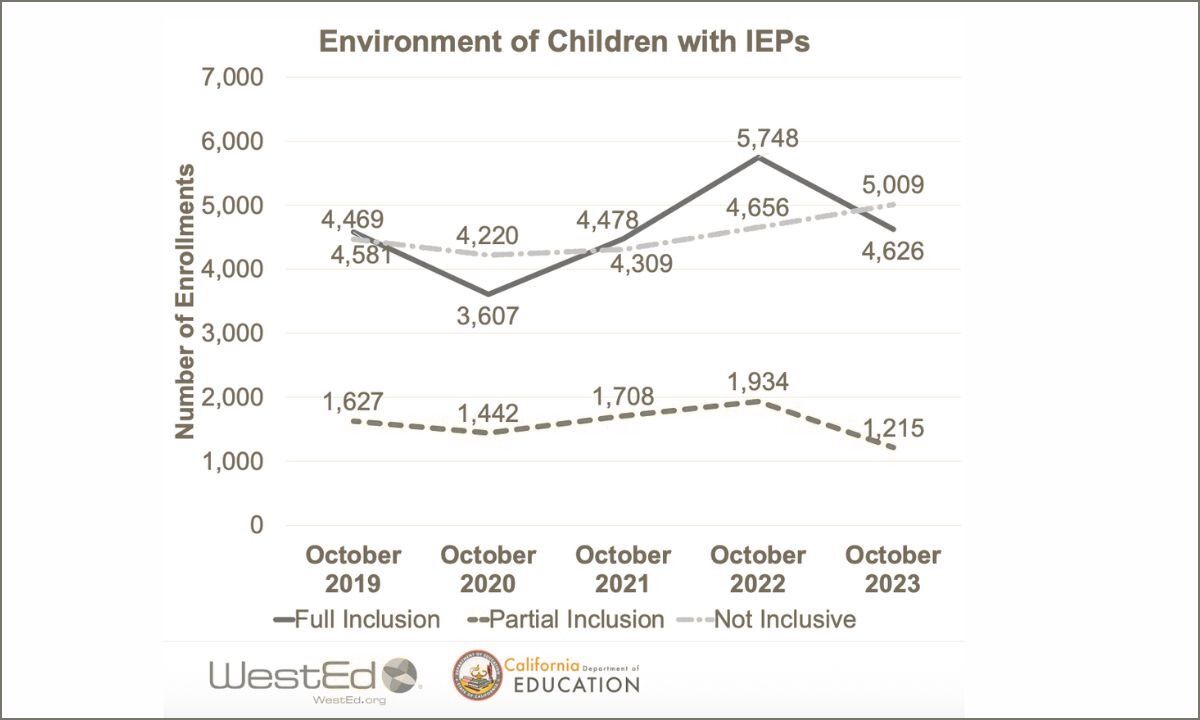California Shows How States Can Step Up for Young Students With Disabilities
Johns: Washington is cutting funding for inclusive classrooms in preschool, denying small children a chance to grow and thrive with their peers.

Join our zero2eight Substack community for more discussion about the latest news in early care and education. Sign up now.
Imagine being 4 years old and ready to start preschool, eager to learn, play and make friends, only to find out there’s no classroom available to you because you have a disability.
That’s a reality for too many young children despite the Individuals with Disabilities Education Act (IDEA), which for 50 years has mandated a free and appropriate public education for eligible children with disabilities. While the law doesn’t guarantee inclusive education outright, it sets the expectation that children with disabilities will be educated alongside their peers without disabilities whenever appropriate.
In practice, however, that expectation is often not met. In the 2022-23 school year, fewer than half of preschool-aged children with disabilities received their special education supports and services in inclusive settings.
IDEA obligates the federal government to cover 40% of average special education costs, but it currently covers around 10% — creating a shortfall that can drive districts to place students with disabilities in separate special education classrooms rather than inclusive ones. States must make inclusion the default, not the exception, to bridge that gap. Achieving this will require partnerships among general and special education teams, schools and community organizations, as well as the coordination of investments in accessible facilities, adaptive equipment, data systems and inclusion-related school policies and practices supported by federal, state and local funding.
It is a worthwhile investment. Research shows that children with disabilities benefit socially, emotionally and academically in inclusive early childhood classrooms. High-quality early education also reduces the need for later special education services. Meanwhile, children without disabilities do just as well in inclusive classrooms as they do in general ones.
Even so, in many places there are numerous barriers to inclusive early learning. Fortunately, they can be overcome through coordination, planning and investment. California’s Inclusive Early Education Expansion Program is one strong model that other states can learn from and adapt.
Funded by the California Department of Education, the program awarded grants to 65 school districts and county offices of education between 2020 and 2024. These focused on increasing access to inclusive early learning for children with disabilities, including those with significant or complex needs. Grantees used funds to address key barriers to inclusion, including a lack of available seats, staffing shortages, gaps in training, inaccessible facilities, limited access to adaptive equipment and disjointed coordination among programs that serve families of young children with disabilities, such as Head Start, preschools and providers of special education and early intervention services.
WestEd’s evaluation of the program found local leaders directed resources toward several types of improvements. First, grantees expanded and renovated early learning facilities to meet Americans with Disabilities Act standards for accessibility and to accommodate more children with special needs. These included upgrades to physical environments, the purchase of materials to enable full participation in classroom activities and lending libraries for adaptive and specialized equipment to help children participate in learning and play. Many programs also had to restructure staffing so special education personnel could more consistently assist in general education classrooms.
Second, grantees invested heavily in workforce development. More than 15,000 early educators participated in professional development on inclusion. The majority reported that they increased their awareness of the benefits of inclusion, deepened their knowledge of inclusive practices, and improved their ability to apply them in their own classrooms. Early educators also said the training strengthened their confidence in their ability to implement inclusive classrooms.
Some grantees invested in adaptive equipment and introduced training specifically focused on using it to bolster individual children’s participation in classroom activities. Educators reported that this helped them better meet diverse needs, make activities more accessible and strengthen inclusive teaching practices.
Although the program focused on state-subsidized preschools, 75% of grantees extended professional development on inclusion to community providers. This helped build a broader network of early educators prepared and increasingly willing to support children with disabilities, including those with significant needs.
Providing multiple opportunities for staff to complete professional development, including virtually, can help schools address staffing shortages that would otherwise prevent educators from accessing professional development.
Crucially, the program fostered stronger partnerships. Grantees collaborated with local partners, including Head Start agencies, early intervention providers, special education teams and county offices of education, to develop systems for identifying, referring and enrolling children with disabilities in inclusive classrooms.
Local partners entered into formal agreements to reserve enrollment slots for children with disabilities or to provide special education services to students enrolled in early learning programs. Partners also developed common visions for inclusion, including shared definitions, goals and tools to raise public awareness. Collectively, these efforts expanded access to inclusive early learning for children with disabilities.
WestEd’s evaluation also found that consistently sharing information among preschools, special education providers and early intervention programs is just as essential as investing in infrastructure, staffing and training when it comes to building and sustaining inclusive early learning programs. Reliable, shared data helps states track who is receiving services and direct resources where they’re most needed.
As part of the program evaluation, WestEd surveyed more than 2,000 families and conducted focus groups with 100 others. Three-quarters of families — both of children with and without disabilities — reported that inclusive early learning settings positively impacted their children. Families of youngsters with disabilities reported gains in social-emotional skills, communication and peer relationships, while families of children without disabilities described how their children learned to appreciate diverse ways of learning and interacting.
The promise of IDEA is within reach, but fulfilling it requires sustained investment and coordination across agencies and early childhood programs. California’s Inclusive Early Education Expansion Program shows what’s possible when those pieces are in place. With the right supports, inclusion can become the norm, enabling all children to learn and thrive together.
Get stories like these delivered straight to your inbox. Sign up for The 74 Newsletter


;)
